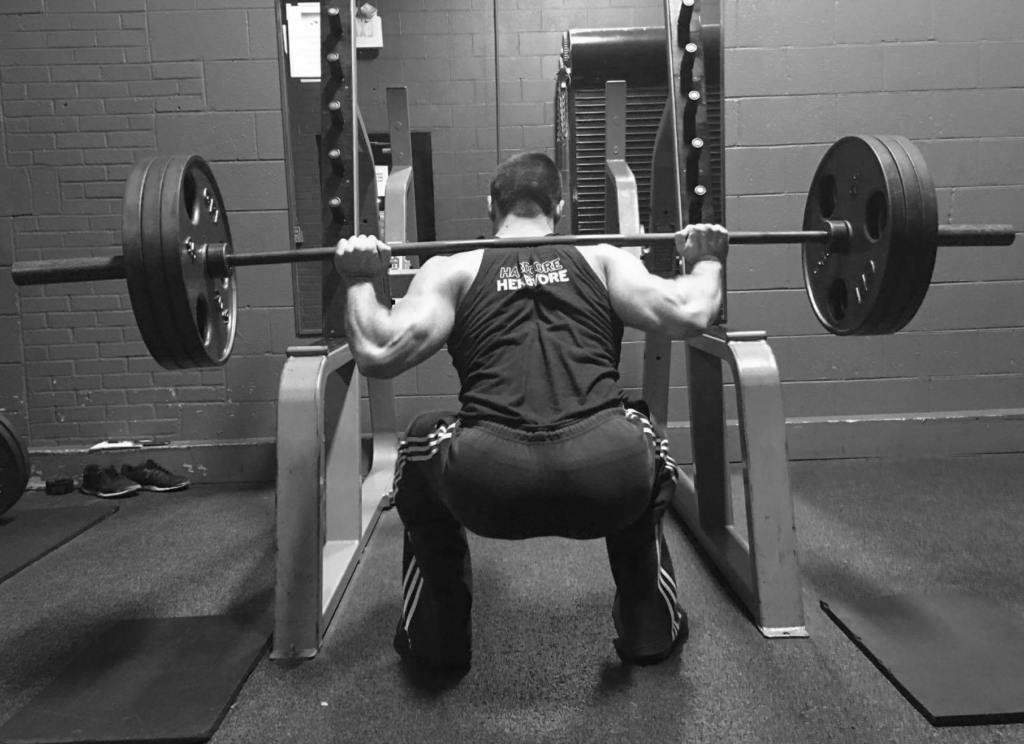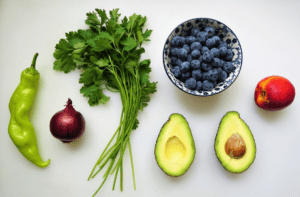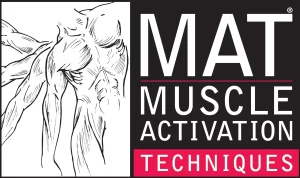by Forest Crosbie
In Part 1 I outlined my preferred resistance training split, and discussed a bit of the philosophy behind it. No matter what split you follow, however, I believe that any well-rounded program should make lower body training a top priority, worthy of its own dedicated workout. The muscles of the legs are some of the biggest and strongest in the body, and anything less is selling them – and your potential gains – short. It is that workout, the infamous “leg day,” that will be the subject of today’s posting.

Whenever possible, I always like to begin my workouts with a heavy compound lift, and leg day is no exception. However, in order to ensure maximal activation and engagement of the posterior chain musculature (the hamstrings, glutes, and lower back), I will first perform a few light sets of isolation work. This usually takes the form of bodyweight movements such as hip bridges and back extensions for high reps.
Once my glutes and hammies are warmed up and firing optimally, I’m ready to jump into the heavy lifting. When it comes to effective barbell movements for stimulating growth in the lower body (or the entire body, for that matter), there are two that reign supreme: the squat and the deadlift. For leg days I like to focus primarily on squats, while deadlifts will be the cornerstone of my back workouts. Heavy squats have long been a nemesis of mine due to persistent knee and lower back pain when performing them. However, after much trial and error and careful adjustments to my technique to better accommodate my individual physiology, I am happy to report that I am now able to squat below parallel pain free! (Keep an eye out for more on this topic in the future.) Squats are still brutal of course, but at least they hurt in a good way.
Having completed my daily dose of punishment in the squat rack, I take a moment to collect myself before moving on to my second favorite exercise for the lower body: walking lunges. Also known as split squats, lunges are unmatched in their capacity for delivering both a punishing cardiorespiratory workout and ample delayed-onset muscle soreness. They can be performed simply with bodyweight, or with added resistance in the form of a barbell, dumbbells, or kettlebells. Having experimented with all three variations, I am actually partial to kettlebells because they allow me to keep my center of gravity slightly lower, which helps in maintaining balance as my muscles get fatigued during the later reps and sets.
The final compound lift of the day has seen a dramatic rise in popularity in recent years, thanks in large part to the pioneering work of PhD and CSCS Bret Contreras (aka, “The Glute Guy”). The barbell hip thrust is a phenomenal exercise for developing the muscles of the posterior chain, particularly – you guessed it – the glutes! I highly recommend giving them a try if you are not familiar with them, and you might just find that they become a staple of your lower body routine.
Once the heavy lifting is done, I reward myself with a burnout on some isolation work. My workout finisher consists of a superset of seated leg extensions and leg curls to target the quadriceps and hamstrings, respectively. I take advantage of the more supported environment of the machines to really focus on my repetition tempo, emphasizing deliberate contractions and slow negatives in order to squeeze the maximum amount of difficulty (and hypertrophic response) out of the slightly lighter weights.
Now at this point you may be wondering, where is the calf training?! It’s a fair question, but for many lifters – myself included – calves are a stubborn muscle group that require extreme measures to grow. Rather than attempting to bang out a few haphazard sets at the end of an already grueling workout, I find it much more effective to prioritize calf training for a separate session, which I can then tackle with maximal energy, intensity and focus. Stay tuned for that training protocol in a future posting!
My rest intervals are for this workout are variable: 2-3 minutes on the heavy compound moves to ensure a full recovery, and 60 seconds between supersets on the isolation work to keep the intensity high and promote blood flow to the muscle tissue. Below is the complete set and rep format I follow:
- (5 minutes light cardio, followed by dynamic stretching)
- Bodyweight Back Extensions: 3 x 15-20
- Barbell Back Squats:: 4 x 8-12
- KettleBell Walking Lunges: 4 x 8-12 (per leg)
- Barbell Hip Thrusts: 4 x 8-12
- Seated Leg Extensions: 4 x 10-15
(superset with)
- Seated Leg Curls: 4 x 10-15
That’s it for today’s workout! Give it a shot if you’d like to mix things up for your next lower body training session, and always remember: friends don’t let friends skip leg day! 😉


